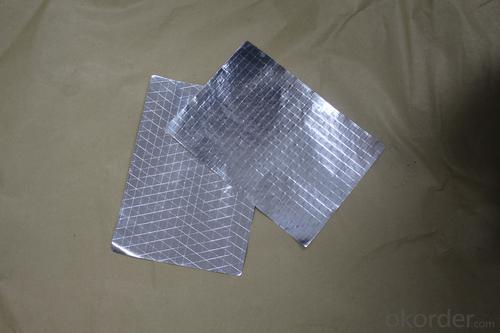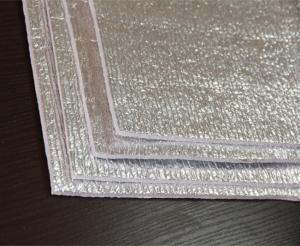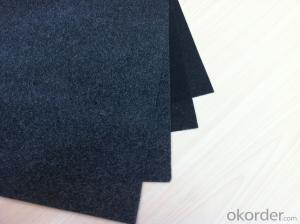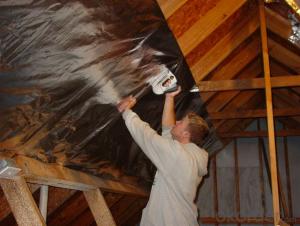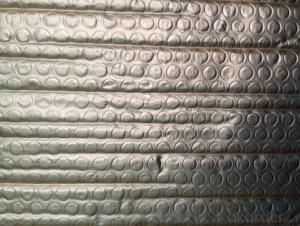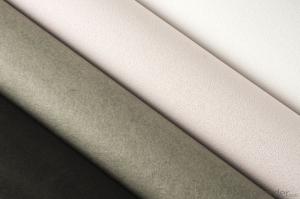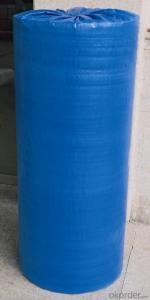Fiberglass Facing Flexible Ducts Bubble Glasswool Green Energy
- Loading Port:
- China Main Port
- Payment Terms:
- TT OR LC
- Min Order Qty:
- -
- Supply Capability:
- -
OKorder Service Pledge
OKorder Financial Service
You Might Also Like
Application:
1,Building Thermal Insulation Material
(1),Roof,Underlay,Under Concrete & floor Insulation;
(2),Attic,Crawl Space,Stud Wall ,Metal Frame Building Insulation.
2,Wrapping
(1),Protective coatings of ventilating pipe,HVAC Duct & Pipe;
(2),Shells of air conditioner and water heater.
Feature:
1), Waterproof, heavy duty, clean, light, flexible, non-absorbent surface
2), Fire resistant & antiglare
3), Recyclable, environmentally friendly
4), Effective in extreme temperatures both hot and cold
5), Easily install, cut, stapled, nailed or glued into place
6), Safe to handle with no special clothing or breathing Equipment
Feature:
1), Waterproof, heavy duty, clean, light, flexible, non-absorbent surface
2), Fire resistant & antiglare
3), Recyclable, environmentally friendly
4), Effective in extreme temperatures both hot and cold
5), Easily install, cut, stapled, nailed or glued into place
6), Safe to handle with no special clothing or breathing Equipment








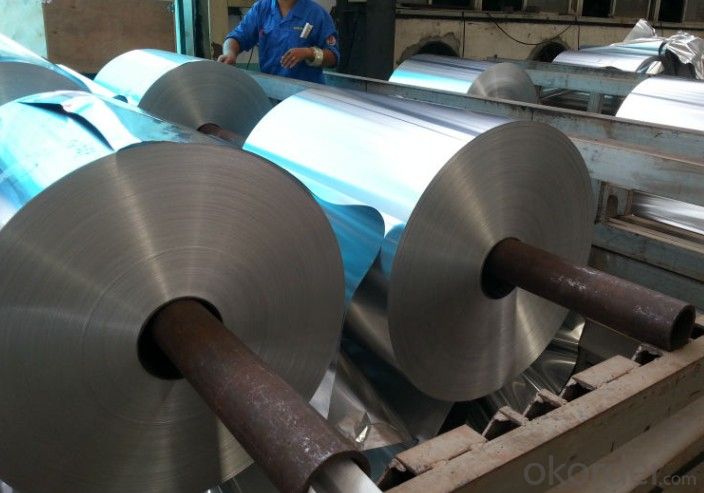

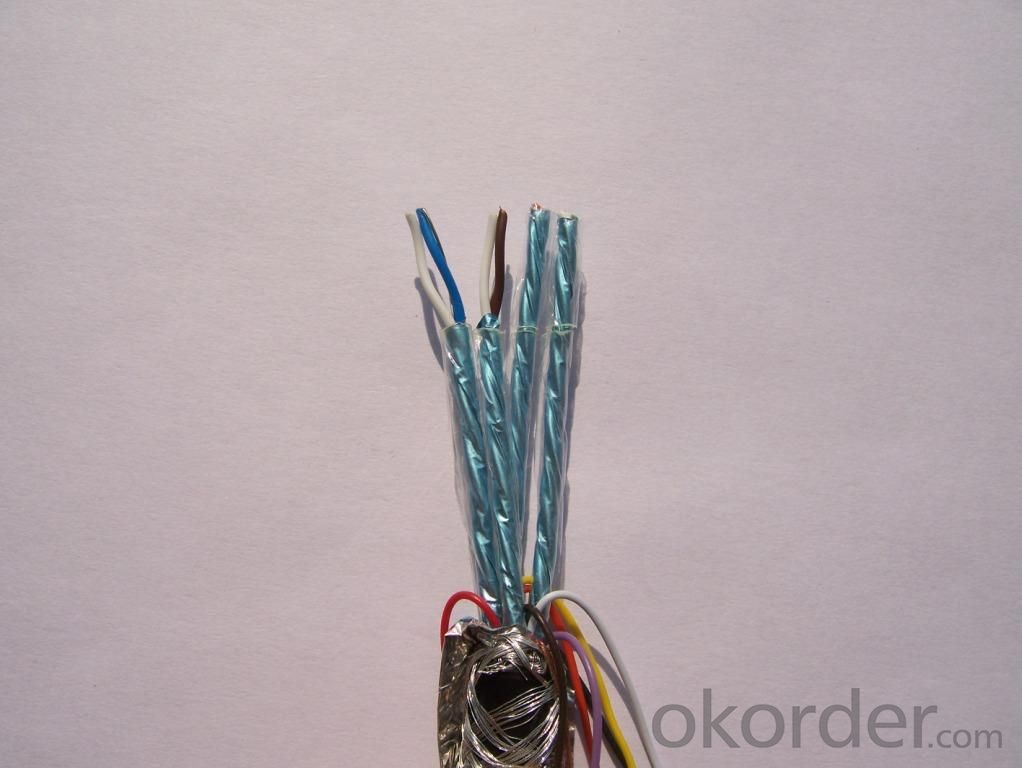

- Q: Is it possible to utilize black fiberglass tissue in caravans or tents?
- <p>Yes, you can use black fiberglass tissue in your caravan or tent. It is often used for insulation and reinforcement due to its heat resistance and strength. However, it's important to ensure that it is installed correctly to avoid any potential health risks associated with inhaling fiberglass particles. Always follow safety guidelines and use appropriate protective equipment when handling fiberglass materials.</p>
- Q: What are the potential health hazards linked to the use of synthetic materials such as black fiberglass tissues?
- <p>While synthetic materials like black fiberglass tissues have various applications due to their durability and strength, there are health risks associated with their use. Inhalation of fiberglass dust or fibers can cause respiratory issues, including irritation and, in severe cases, respiratory diseases. Prolonged exposure may lead to conditions like fiberglass lung, a form of pneumoconiosis. It's crucial to use proper protective equipment and ventilation when handling these materials to minimize health risks.</p>
- Q: What distinguishes black fiberglass tissue from standard fiberglass tissue in terms of color, properties, and applications?
- <p>Black fiberglass tissue is a type of fiberglass material that has been treated to give it a black color, often through the addition of pigments or dyes. This coloration can enhance its aesthetic appeal in certain applications. It offers similar properties to regular fiberglass tissue, such as strength, durability, and heat resistance, but may have slightly different thermal properties due to the pigmentation. Regular fiberglass tissue is typically white or off-white and is used in a wide range of applications, including insulation, construction, and automotive parts. The choice between black and regular fiberglass tissue often depends on the specific requirements of the project, such as visual appearance, thermal efficiency, and cost.</p>
- Q: What distinguishes black fiberglass tissue from other types of fiberglass tissue in terms of color, properties, and applications?
- <p>Black fiberglass tissue is distinguished by its color, which is typically achieved through the addition of pigments during the manufacturing process. This coloration can enhance UV resistance and provide a more aesthetically pleasing appearance in certain applications. Compared to other types of fiberglass tissue, such as white or colored ones, black fiberglass may also exhibit slightly different thermal properties due to the pigmentation. However, the core properties like strength, flexibility, and insulation capabilities remain largely the same across different colored fiberglass tissues. The choice between black and other types often comes down to specific industry requirements or aesthetic preferences.</p>
- Q: What are the most effective steps to adhere a black fiberglass tape to a wall or ceiling?
- <p>The best way to install a piece of black fiberglass tape on a wall or ceiling involves preparing the surface, applying the tape, and securing it properly. First, clean the area thoroughly to remove dust and debris. Then, cut the fiberglass tape to the desired length. Apply a high-quality adhesive specifically designed for fiberglass to the back of the tape. Press the tape firmly onto the surface, starting from one end and smoothing it out to remove any air bubbles. Use a putty knife or your fingers to press firmly and evenly. Let the adhesive dry according to the manufacturer's instructions before handling or applying any weight to the tape.</p>
- Q: Can black fiberglass tissue be used for cleaning purposes?
- <p>Yes, black fiberglass tissue can be used for wiping clean, especially in industrial settings. It's known for its strength and durability. However, it's important to note that fiberglass can be abrasive and may scratch delicate surfaces. It's also recommended to use it with care to avoid any potential health risks associated with inhaling fiberglass particles. Always use proper safety equipment when handling fiberglass materials.</p>
- Q: This question asks about the impact of black fiberglass tissue on the quality of air inside buildings.
- <p>Black fiberglass tissue, commonly used as insulation, can affect indoor air quality if not properly installed or if it becomes damaged. Fiberglass releases tiny glass fibers into the air, which can be inhaled and cause respiratory irritation, allergies, or even more severe health issues over time. Proper installation and sealing can minimize the release of these fibers. Additionally, ensuring good ventilation in buildings can help reduce the concentration of airborne fibers. It's also important to follow safety guidelines when handling fiberglass to prevent exposure.</p>
- Q: This question asks for guidance on selecting a dependable supplier for black fiberglass tissues, a material used in various industries.
- <p>To choose a reliable supplier of black fiberglass tissues, consider the following: Check their industry reputation and customer reviews. Ensure they have the necessary certifications and quality control measures in place. Evaluate their product quality by requesting samples. Assess their delivery times and reliability. Consider the supplier's financial stability and history. Look for a supplier that offers good customer service and after-sales support. It's also important to compare prices and negotiate terms that fit your budget and requirements.</p>
- Q: Is it possible to utilize black fiberglass tissue for the production of handkerchiefs?
- <p>Black fiberglass tissue is not typically used for handkerchiefs due to its rigid and non-absorbent nature. Handkerchiefs are usually made from soft, absorbent materials like cotton or linen to ensure comfort and functionality. Fiberglass, being a composite material with glass fibers embedded in a resin matrix, is more commonly used in construction, automotive, and aerospace industries for its strength and durability, rather than for textiles intended for personal use.</p>
- Q: What are the methods to avoid entanglement of glass fiber paper during its application?
- <p>To prevent glass fiber paper from getting tangled during use, ensure proper storage in a dry, cool place away from direct sunlight. Use gloves to handle the paper to avoid skin oils that can cause sticking. Apply a light coating of talcum powder or a similar anti-static agent to reduce static electricity, which often contributes to tangling. Cut the paper with sharp, clean tools to minimize fraying. When using, unroll or unfold the paper slowly and carefully to prevent it from bunching up. Regularly clean and maintain the machinery or equipment used with the glass fiber paper to prevent buildup that could cause entanglement.</p>
Send your message to us
Fiberglass Facing Flexible Ducts Bubble Glasswool Green Energy
- Loading Port:
- China Main Port
- Payment Terms:
- TT OR LC
- Min Order Qty:
- -
- Supply Capability:
- -
OKorder Service Pledge
OKorder Financial Service
Similar products
Hot products
Hot Searches
Related keywords








